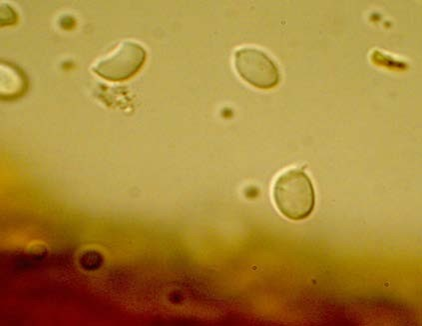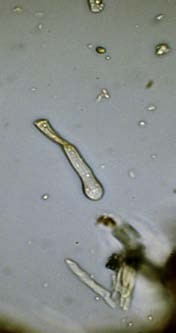| Macroscopic characters | shape | Circular or irregularly lobed |
| size | Up to 25 cm in diameter |
| texture | Soft fibrous when young; corky to somewhat brittle with age |
| pileus | Solitary or imbricate; orange at first; yellowish-brown at maturity; faintly zonate; tomentose to hirstute |
| stipe | Central or lateral; short and stout; simple or branched; up to 5 cm diameter; tomentose to hirstute |
| context | Yellowish-brown; becoming dark rusty-brown with age; soft; azonate |
| pore surface | Orange at first; becoming greenish-brown then yellowish to rusty brown with age |
| pores | Angular; 1-2 per mm |
| tube layer(s) | Decurrent, distinct from context; greenish to rusty brown; up to 1.5 cm thick |
| Microscopic characters | hyphal system | Monomitic |
| clamp connections | N/A |
| sterile elements | Cystidia frequent; yellowish; cylindrical |
| basidiospores | Ellipsoid to ovoid; hyaline; smooth; 6-9 um x 2.5-5 um |
| Habitat characters | substrate/host | Grows from roots or occasionally effused-reflexed on base of living trees or stumps; living conifers; especially pines in southeastern United States |
| seasonality | Annual |
| type of decay | Brown cubical rot of heartwood of butt and roots of living conifers. |
| range | Throughout the conifer forest ecosystems of North America |
| Notes | Thin, whitish, resinous mycelial felts are present in shrinkage cracks. Major cause of butt rott in Douglas fir and other commercial timber species |
| References | Overholts, 1953; Gilbertson & Ryvarden, 1986. Grand & Vernia, 2000, 2002. |








